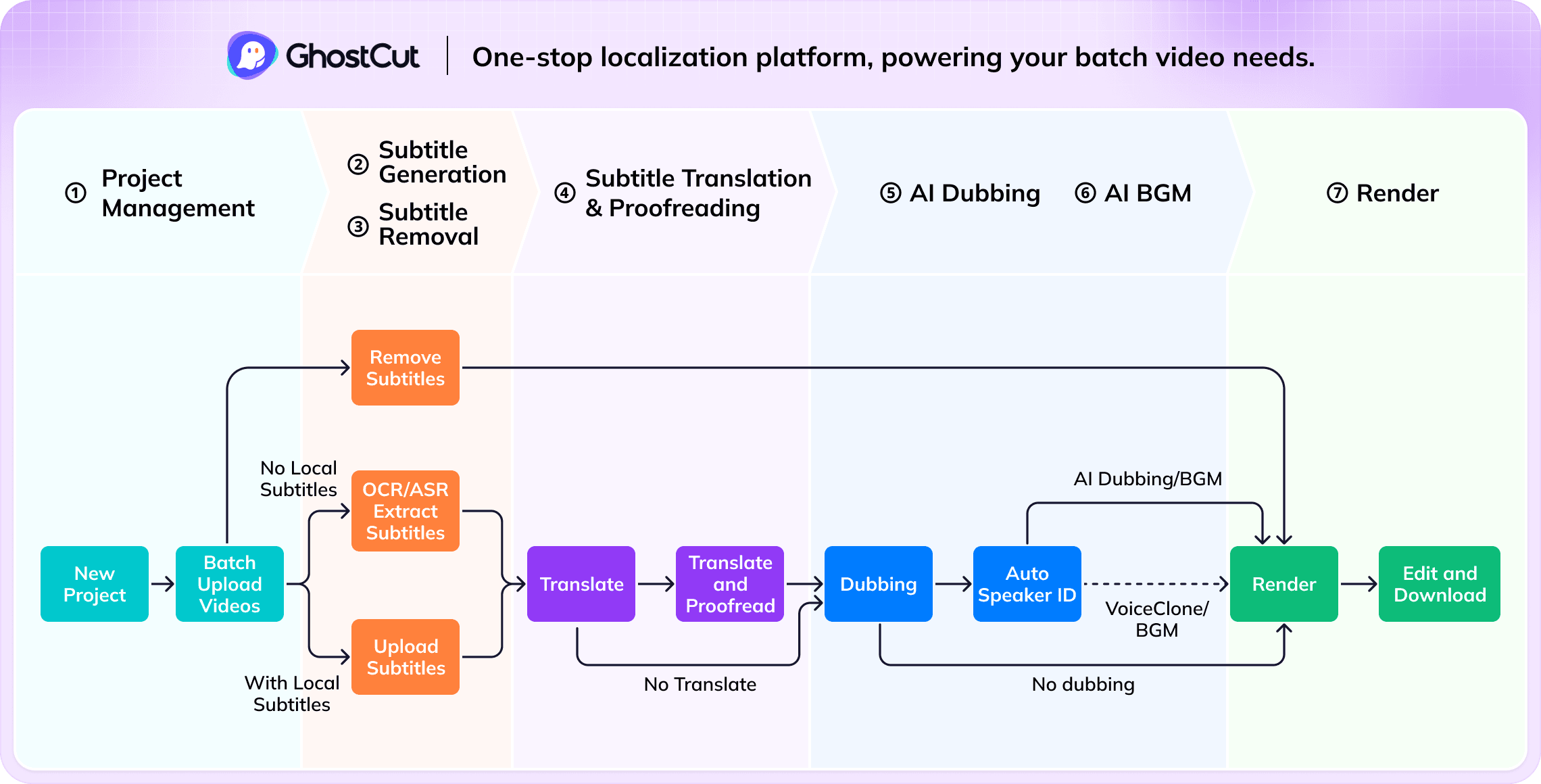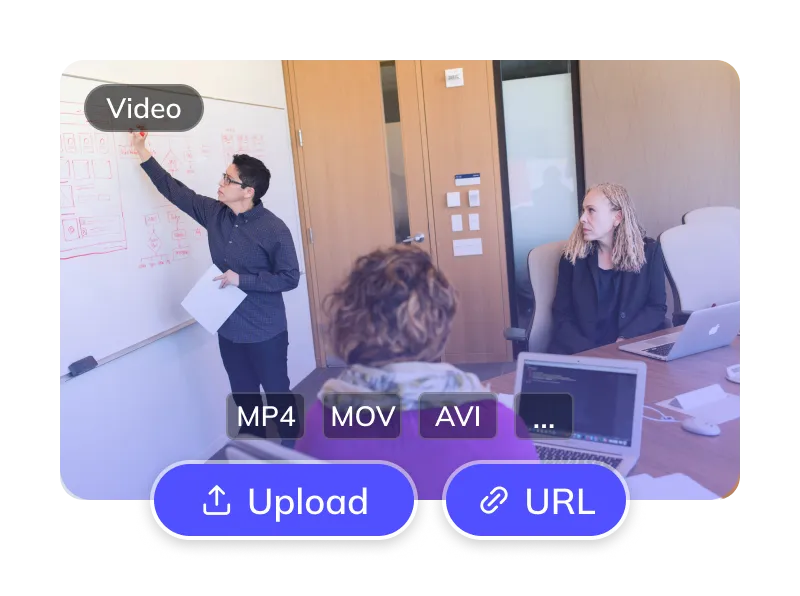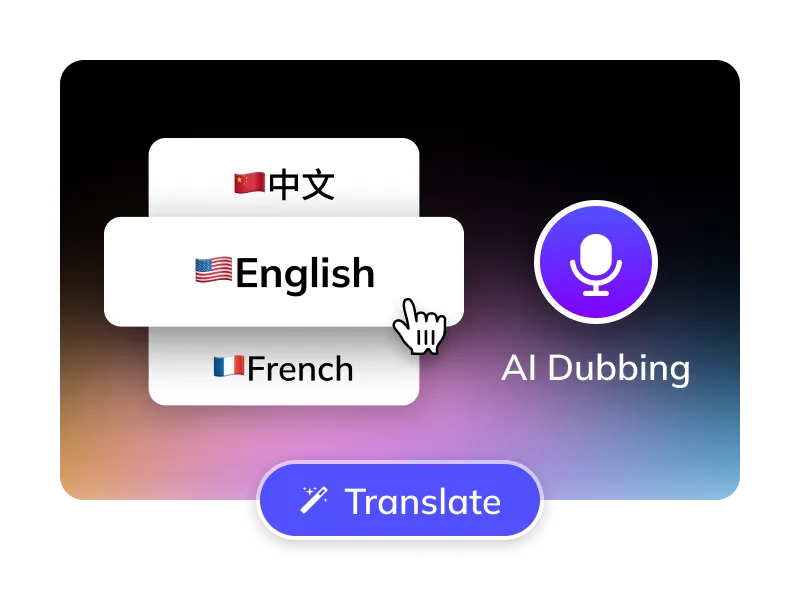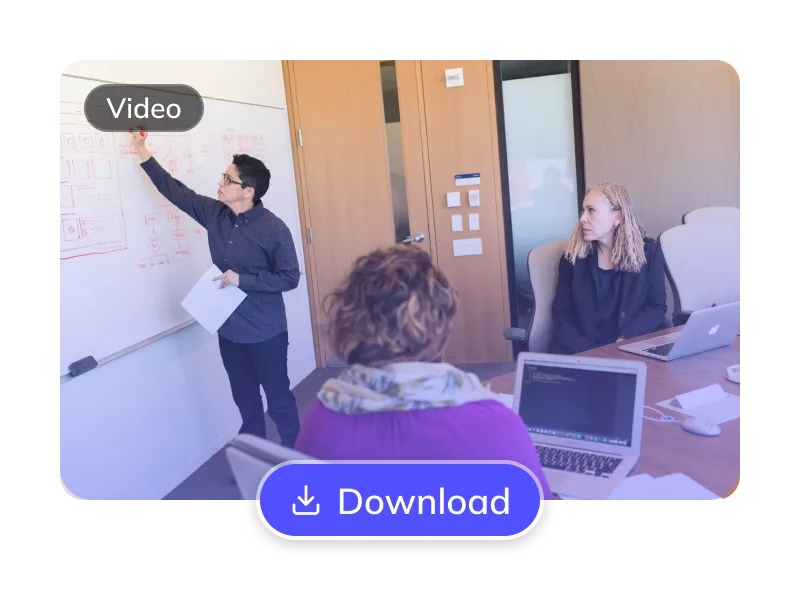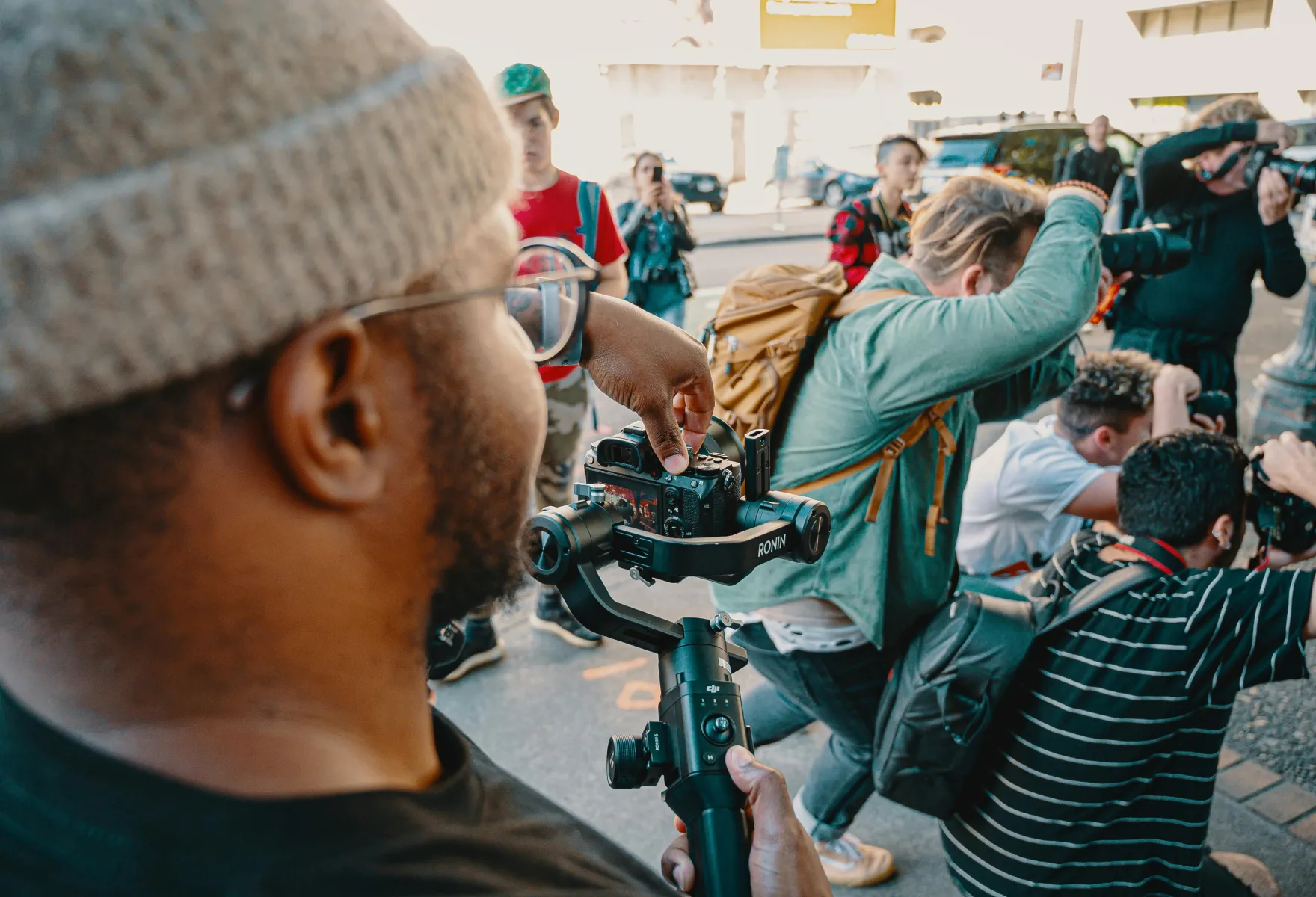How to Translate French Videos to English ?
Translate French Videos to Japanese in 3 Easy Steps
Trusted by 1,500,000+ Global Creators and Businesses
Why GhostCut for Your Video Translations?
GhostCut is your all-in-one AI solution for translating French content into natural, engaging Japanese.
Effortless Project Management
Manage French assets, subtitles, & Japanese videos. Batch process projects efficiently.
Pinpoint Japanese Accuracy
Up to 99.5% accurate. Optimized for French-to-Japanese with LLM calibration & multi-agent review for culturally fluent Japanese translations.
Lifelike Japanese AI Dubbing
Choose from diverse, human-like Japanese AI voices (US/UK accents). Emotion-cloning technology captures original tone for natural Japanese delivery.
Flexible French Subtitle Options
Optionally erase original French hardsubs for a clean slate. Translate embedded French subtitles directly.
Smart Multi-Speaker ID (French)
AI detects multiple speakers in French videos. Assign or clone distinct Japanese voices per character, with cross-episode consistency for complex Japanese dubs (dramas, interviews).
Efficient Batch Processing & API
Batch translate and dub 100s of French videos to Japanese at once. Seamlessly integrate with our robust API.
Versatile BGM Control
Keep or mute original BGM. Our unique tech can also isolate sound effects, meeting diverse copyright and distribution needs.
Unbeatable Value
Flexible French-to-Japanese plans. Try core features free. Automated pro service from just $0.1/minute.
Easy Online Access
No downloads. Instantly translate French videos to Japanese online. Works on Windows, Mac, & major mobile browsers for cloud processing anywhere.
The GhostCut Edge: Unmatched Accuracy, Speed, and Value.
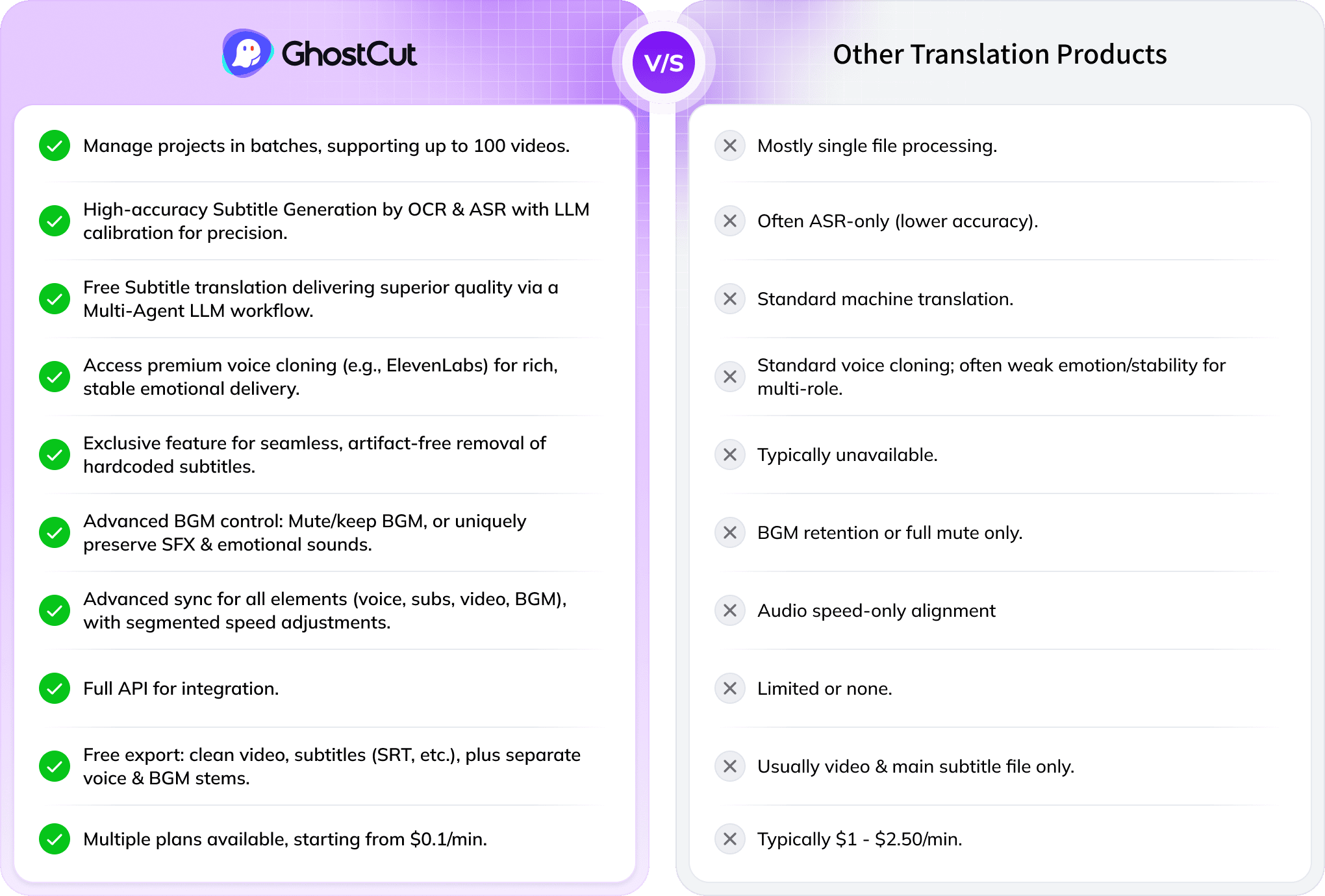
Every Algorithmic Optimization, Engineered for Quality Japanese Video
Mastering Long-Form French Drama & Multi-Character Dubbing
Translating a 100-minute French drama with 4000+ lines and many characters into Japanese is tough. Standard AI struggles to tell speakers apart, causing errors. GhostCut’s multi-modal AI (video, voice, text) excels in long-form, multi-speaker content, ensuring accurate, consistent character voices across entire series.
Translate Now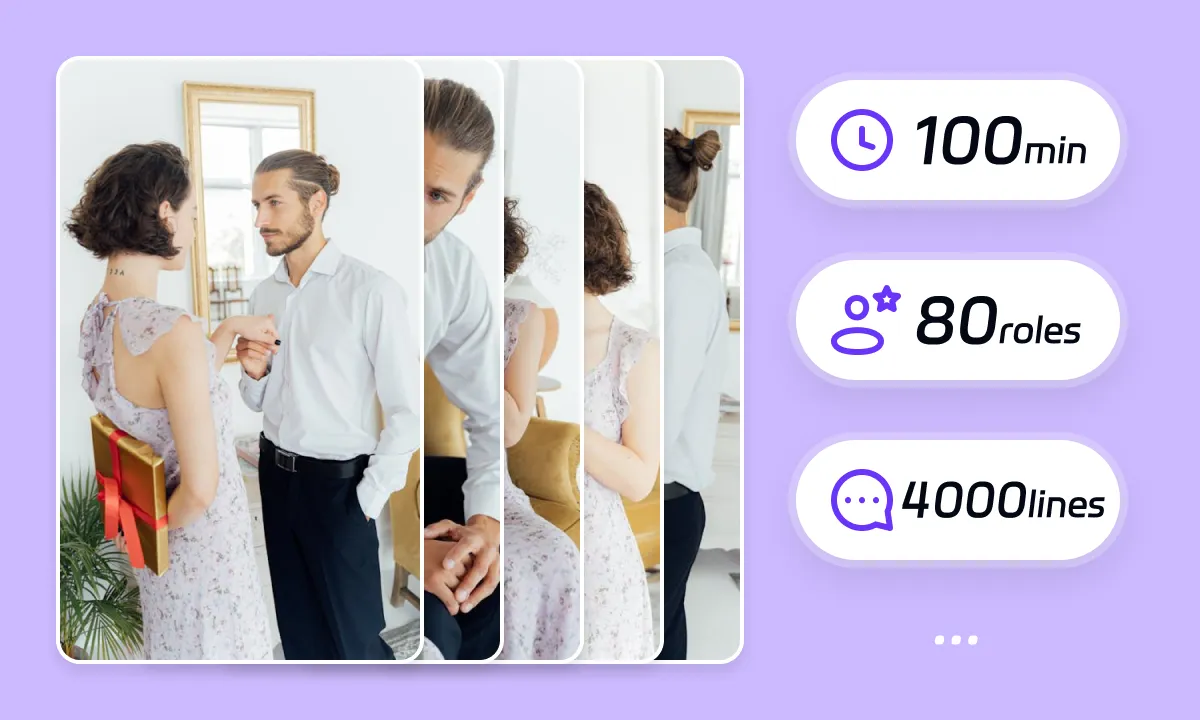
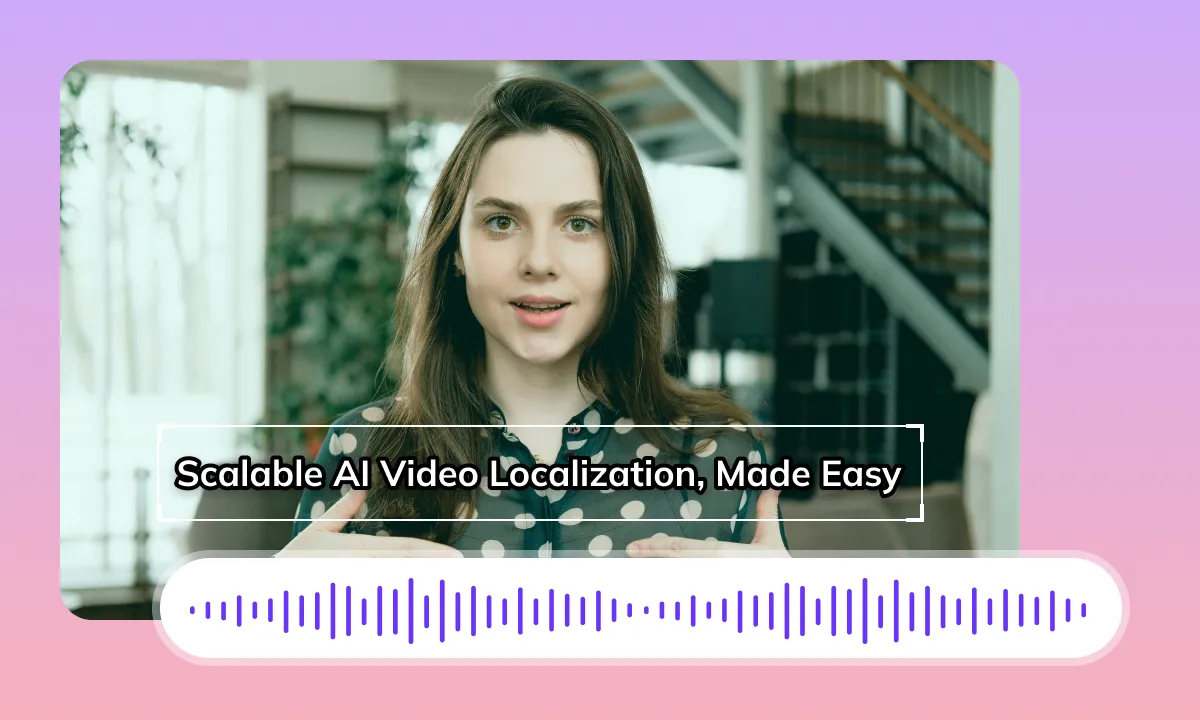
Seamless Japanese Dubbing & Perfect Lip-Sync
GhostCut ensures natural Japanese audio flow by treating related subtitles as whole ideas for TTS. It then precisely times new Japanese subtitles. Since French-to-Japanese translation can change speech length, our AI expertly adjusts the new Japanese audio, subtitles, video, and BGM to maintain perfect sync, just like a seasoned editor.
Translate NowBoost ROI with Flawless French Subtitle Removal
Original French hardsubs can limit your video's global appeal. GhostCut’s AI doesn't just blur; it intelligently reconstructs the background obscured by French subtitles, even complex ones, for a perfectly clean, high-quality visual. This means better viewer engagement, longer watch times, and higher ROI.
Translate Now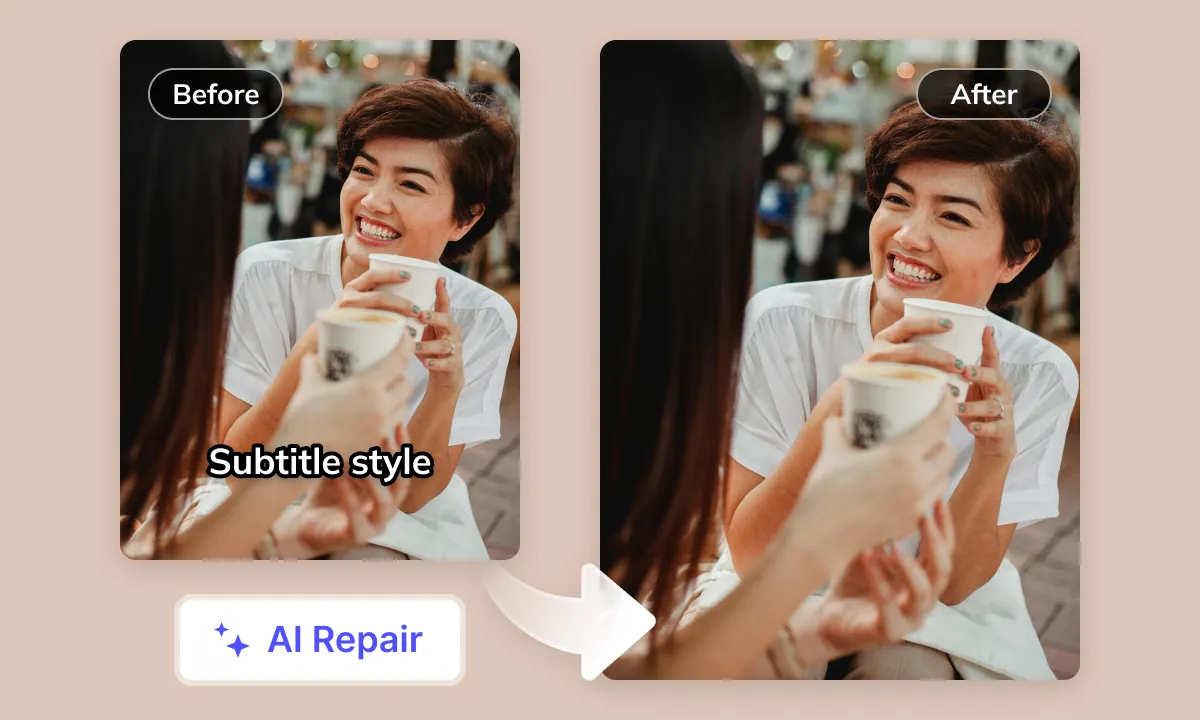
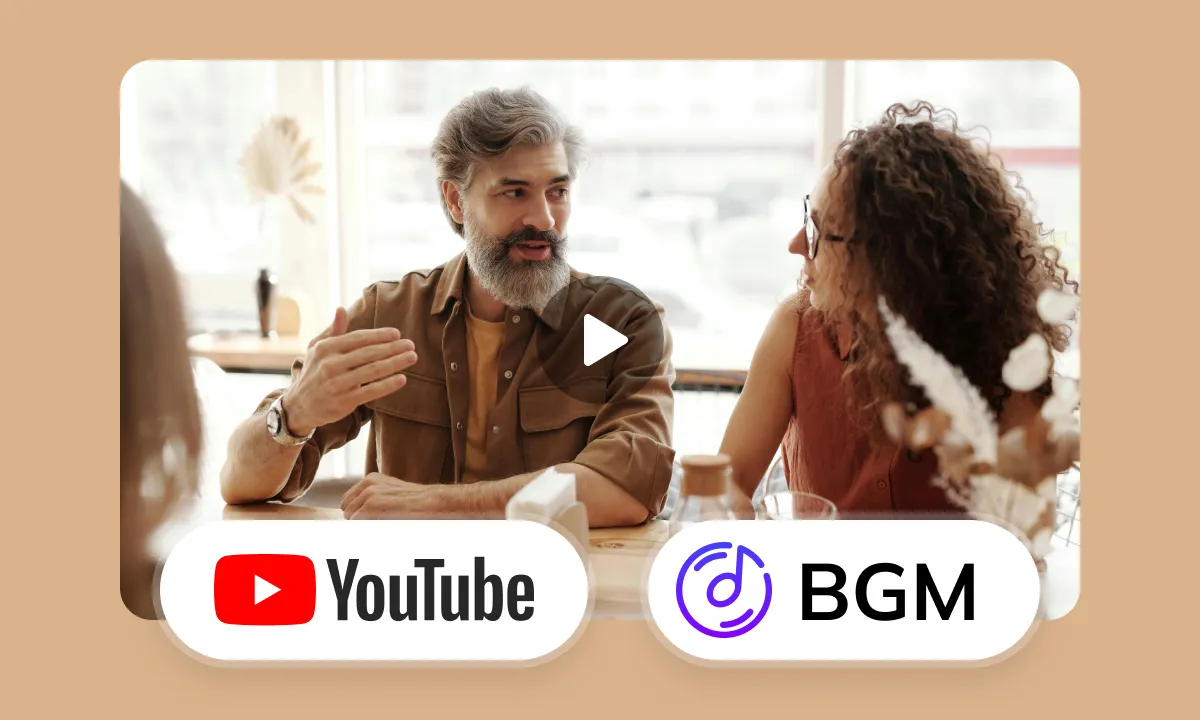
Smart Audio Control for YouTube Creators
Navigating BGM copyright on YouTube is tricky. GhostCut’s advanced audio separation isolates French dialogue for translation, while intelligently managing BGM, sound effects, and even emotional expressions. Our "Keep SFX, Remove Music" option is a creator favorite for avoiding copyright issues without losing your video’s impact.
Translate NowYour French Videos Deserve Japanese Viewers
Quality French content struggles in the Japanese market due to language barriers. Lack of quality French-to-Japanese translationdubbing on platforms makes it hard for Japanese viewers to understand, hurting engagement and reach. The market urgently needs professional, efficient French-to-Japanese AI video translation and dubbing solutions
French to Japanese Video Translation: Challenges and Considerations
Translating Native French Content
The primary challenge in directly translating original French hardcoded subtitles or voiceovers into Japanese is to avoid awkwardness and information loss, given the significant differences in linguistic systems and cultures between French and Japanese
Linguistic, Cultural, and Lexical Gaps
French grammar, characterized by its SVO sentence structure, extensive verb conjugations, gender, and number, differs significantly from Japanese, with its unique SOV word order, particle system, word-ending variations, and honorifics. Furthermore, cultural nuances like memes, puns, and euphemisms vary greatly between French and Japanese. The core difficulty lies in achieving a translation that is both faithful to the original text and culturally appropriate for Japanese expression
Writing Systems and Subtitle Layout
French uses the Latin alphabet, while Japanese combines Kanji, Hiragana, and Katakana, leading to significant differences in writing systems. Japanese subtitles also have different information density and visual styles compared to French. Meticulous layout adjustments are required, including character limits per line and text wrapping rules, to ensure subtitles are clear, legible, and do not obstruct the video content
Pacing and Syllable Structure Differences
French and Japanese have distinct syllable structures and pronunciation rhythms, which can lead to perceived differences in speaking speed even when conveying similar content. Precisely aligning the French original audio timeline with the translated Japanese text to ensure smooth audio-visual synchronization is a significant technical challenge
French AI Speech Recognition Challenges
French features various accents (e.g., metropolitan, Quebecois), numerous liaisons, and informal expressions. Improving the accuracy of French AI speech recognition remains an ongoing challenge, especially in multi-speaker dialogues or noisy environments
Scarcity of High-Quality Japanese AI Voices
While the selection of Japanese AI voices is growing, achieving naturalness, emotional nuance, and, most importantly, accurate comprehension and natural rendition of the complex honorific system (e.g., sonkeigo, kenjougo, teineigo) remains difficult. High-quality AI voices capable of conveying subtle emotions and appropriate honorifics are still scarce
Lip-Sync Synchronization Difficulty
French and Japanese have distinct articulation points, mouth movements, and phoneme sets. Consequently, achieving natural lip-sync for Japanese dubbing that matches the original French characters' mouth movements in the video poses extremely high demands on AI technology
Standards for Top-Tier AI Video Translation
Ideal French to Japanese AI video translation should achieve: high-accuracy French speech recognition - natural and fluent Japanese translation that accounts for linguistic structure, culture, and honorific differences - high-quality Japanese AI dubbing (with particular attention to honorifics and lip-sync) - automated precise timeline alignment for subtitles and dubbing
Tackling Video Translation Challenges with AI Empowering your French content for any worldwide scenario.
Your All-in-One AI Translation Studio
GhostCut offers more than just French-to-Japanese translation. It's a complete AI-powered workflow: subtitle extraction 、 removal 、 translation and proofreading to multi-character dubbing , BGM processing, and final rendering. Go from French source to global-ready videos, effortlessly.
